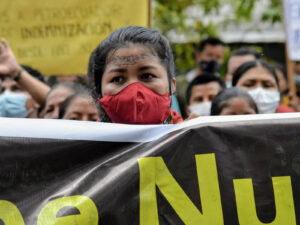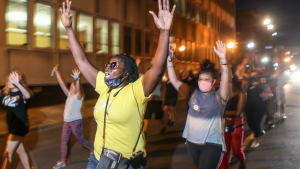THE NOVEL coronavirus, as far as we know, does not discriminate along racial lines. But America does — and the data so far show that black people are dying at a disproportionate rate. The first thing to do about it? Get more of that data, and fast.
The numbers trickling in from cities, counties and states in recent weeks are alarming: Chicago’s population is about 30 percent black, but so are nearly 70 percent of those in the city killed by the virus. Milwaukee County looks worse: Black people make up 26 percent of the population, and a whopping 73 percent of covid-related deaths. In Michigan, it’s 14 and 41; in Louisiana, it’s 32 and 70. Maryland has a 30 percent black population and reported Thursday that black residents account for 40 percent of the state’s deaths.
We don’t know the federal statistics yet, because there aren’t any. The Centers for Disease Control and Prevention typically tracks the location, age and race of those affected by disease outbreaks — but this time it has left out the last of the three. Several members of Congress have sent a letter exhorting Health and Human Services Secretary Alex Azar to change that. He should. Those numbers are essential to understand what’s happening in some of this country’s most vulnerable communities.
There’s the possibility of a race gap in testing and treatment: Medicine is far from immune to implicit biases, and doctors worry the subjective criteria for coronavirus care amid shortages will lead to similar dismissals, to deadly effect. There’s also the possibility that preexisting inequities are making this crisis’s impact unequal. Black people already suffer lopsidedly from obesity, diabetes, asthma and hypertension, all likely associated with worse outcomes from a lung-attacking coronavirus. This reality isn’t an accident but, rather, a result of economic and environmental conditions imposed on minorities over the nation’s long history of discrimination.
Those same conditions — substandard housing, lack of access to medical care, lack of proximity to grocery stores — also may make infection more likely today. It is difficult to remain six feet away from others crammed into a single minimarket for essential goods. Food stamp recipients aren’t allowed to pay for groceries online and have them delivered. Black Americans tend to occupy jobs, from bus-driving to caregiving, that put them at higher risk than those laboring at their laptops. Undocumented immigrants are likely in danger, too, as living in the shadows discourages them from obtaining testing and treatment.
Until we know what is happening, to whom it is happening and where it is happening, we can’t begin to sort through these issues. We can’t know where to amp up testing, where to dispatch additional food aid, where to send emergency health support. Dr. Anthony S. Fauci, director of the National Institute of Allergy and Infectious Diseases, acknowledged this week the toll covid-19 is taking on minorities and noted that “there’s nothing we can do about it right now except to give them the best possible care.” Giving people the best care is fundamental. But if we start collecting the numbers, they likely will point to more that can be done.




